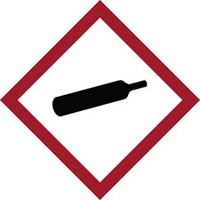| The Home page of ILPI's Safety Data Sheet (SDS) Resource, the leader in SDS information since 1995! | |
| The history and philosophy behind this resource. | |
| A curated collection of books and reference materials concerning Safety Data Sheets and closely related topics. | |
| Paste your plain text SDS into the SDS-Demystifier, and it will be converted into a hypertext-enriched document with links to detailed explanations of each key term. | |
| An extensive list of frequently asked questions about Safety Data Sheets including regulations, content, compliance, and more. | |
| A humorous take on Safety Data Sheet jargon. Fill in the blanks on our entry form to generate a personalized Unsafety Data Sheet to share with your coworkers. | |
| Since 1995, we've maintained this massive curated list of the best places to find Safety Data Sheets on the Internet. | |
| Way more than a glossary, this hypertext-enhanced resource covers hundreds of SDS-related terms and expert knowledge. Each entry includes both the SDS relevance and links to additional authoritative resources. | |
| Archived results of Safety Data Sheet related polls taken by some of our millions of site visitors | |
| You are here! The OSHA regulations behind SDS regulations, including the inspection guidelines and over 400 official interpretations letters under the Hazard Communication Standard | |
| Commercial suppliers of SDS authoring and management software as well as cloud compliance services. | |
| Commercial companies that will create SDS's for your specific needs as well as SDS translation companies. |

Safety signs, banners, and scoreboards? Get yours at Safety Emporium!
| Title: 01/25/1995 - Guidance on whether an inert gas in the non-compressed state represent hazardous chemicals under the Hazard Communication Standard. | |
| Record Type: Interpretation | Standard Number: 1910.1200 |
January 25, 1995
Richard F. Andree, CSP, PE, Ph.D.
Vice President - Director of Safety and Health Services
Lovell Safety Management Company, Inc.
161 William Street
New York, New York 10038-2675
Dear Mr. Andree:
This is in further response to your letter of April 11, to the Occupational Safety and Health Administration (OSHA), requesting guidance on whether an inert gas in the non-compressed state represent hazardous chemicals under the Hazard Communication Standard (HCS), 29 CFR 1910.1200. Your letter specifically inquired about gases such as argon, nitrogen and helium at atmospheric pressure. Please accept my apology in the delay in this response.
OSHA agrees with your statement that inert gases are classified as a simple asphyxiants. Patty's Industrial Hygiene and Toxicology defines a simple asphyxiant as: "physiologically inert gases that can act principally by dilution of the atmospheric oxygen below partial pressure necessary to maintain an oxygen saturation in the blood sufficient for normal tissue respiration."
Inert gases, such as argon, nitrogen and helium, have the potential to create a hazardous atmosphere (less than 19.5% oxygen) and, where that potential exists, are considered by OSHA as hazardous chemicals presenting an acute health hazard and covered by the standard. The HCS would not apply where employees are not occupationally exposed, under normal conditions of use or in a reasonably foreseeable emergency, to the oxygen displacing hazard associated with inert gases. Obviously, argon, nitrogen and helium occur naturally in the atmosphere, and under those conditions they are not hazardous chemicals.
The HCS requires chemical manufacturers, or importers to assess the hazards of chemicals which they produce or import, and all employers to provide information to their employees about the hazardous chemicals to which they are exposed, by means of a hazard communication program, labels and other forms of warning, material data safety sheets (MSDSs), and information and training. Included in the HCS is paragraph (c) which contains a broad definition of the term "health hazard." Appendix A of the HCS also provides further definition and explanations of the scope of health hazards including acute health hazards. Enclosed for your reference is a copy of a February 9, Hazard Communication; Final Rule which contains a number of minor changes and technical amendments to clarify further the regulatory requirements.
You objected to the language in the March 4, 1993, letter to Matthew McFarland stating that toxicity has been established in inert gases, and that the manufacturer, importer, and/or distributor has the duty of performing a complete hazard determination. To elaborate on the underlined phrase we mean the toxic effects of excessive levels of inert bases has been well established. Hopefully, this clarifies the language and addresses your concern.
We hope this information provides you with the necessary guidance. Thank you for your interest in worker safety and health. Should you require additional information please contact the Office of Health Compliance Assistance at (202) 219-8036.
Sincerely,
Joseph A. Dear
Assistant Secretary
The original official public domain version of this document is available from OSHA at https://www.osha.gov/laws-regs/standardinterpretations/1995-01-25.
